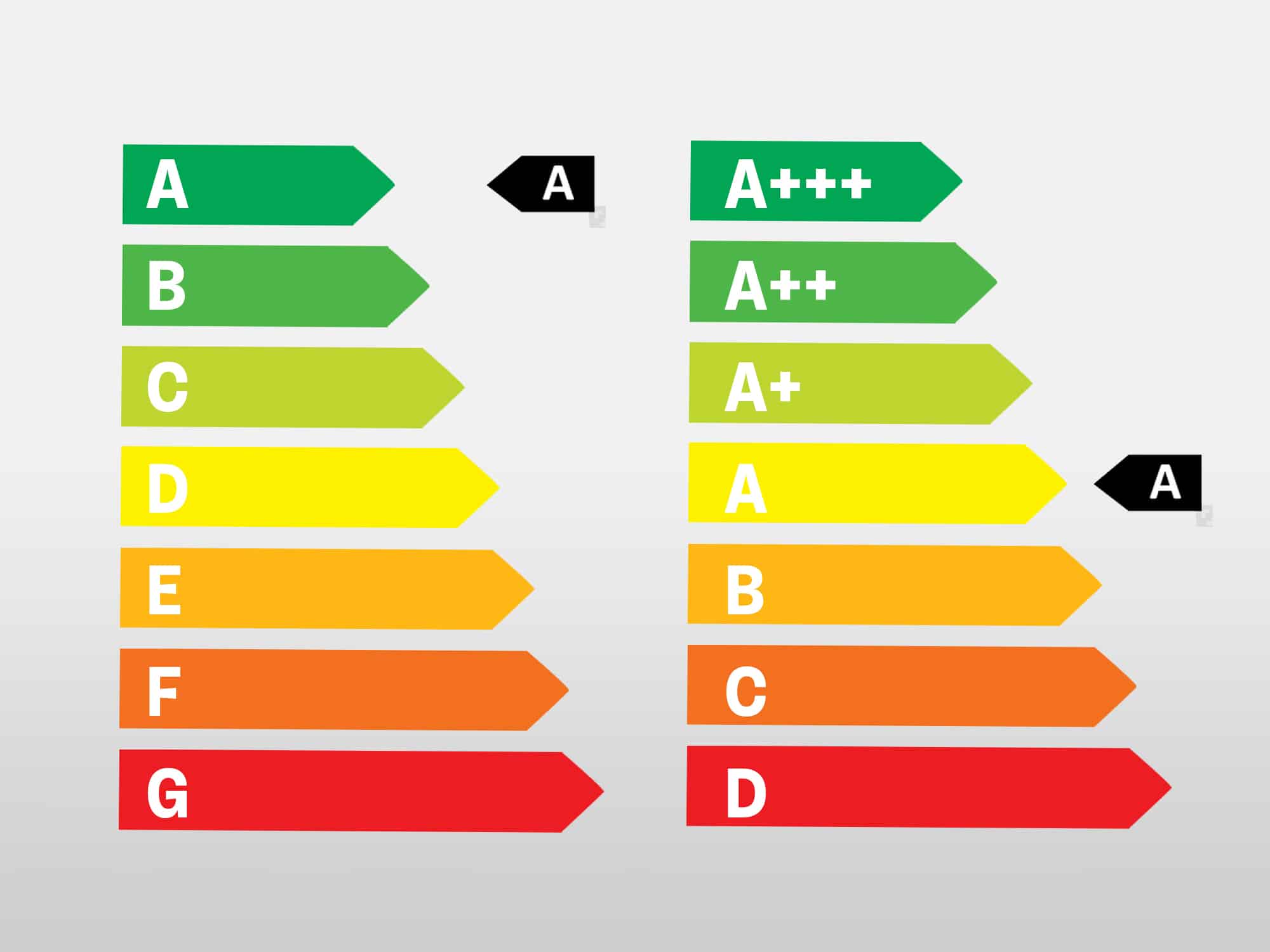The EU energy labels are now well known to every consumer, unlike the new energy efficiency classes. According to EU regulations, all household appliances subject to labelling must be classified in new energy efficiency classes by 2030. A process that may well lead to confusion among consumers.
New energy efficiency classes – this is what is behind the new allocation of classes A to G
About 30 years ago, the EU energy label, which now adorns many electrical household appliances, was introduced. Since 1994, many manufacturers have been obliged to classify their appliances in the scale of energy efficiency classes from A to G according to the official EU specifications. Over the years, it became necessary to redefine the energy efficiency classes and on 1 March 2021, the new specifications then came into force.
- The classification of the energy efficiency classes from A to G is based on the American grading system and accordingly the energy efficiency class A distinguishes a household appliance that is comparatively low in energy, while an appliance in energy efficiency class G has a high energy requirement.
- Over the years, technology developed significantly and more and more household appliances came on the market that consumed significantly less energy than the “old” appliances of energy efficiency class A. In order to do justice to the new household appliances, the first plus sign was added to the A and in the course of time this was followed by several more.
- In short: The EU energy label, which was supposed to be a decision-making aid for consumers, became increasingly confusing with its numerous plus signs behind the energy efficiency class and was therefore revised. The new energy efficiency classes are now intended to remedy this shortcoming and provide more information instead of confusion.
- For this reason, the first two energy efficiency classes A and B will not be occupied for the time being, at least the previous household appliances will not be grouped there. They will all be “downgraded” so that appliances with new, innovative and energy-saving technologies can be clearly labelled accordingly.
The new EU energy label – what you should know
On the surface, the new classification of the energy efficiency class is hardly noticeable at first glance. The previous classification into energy efficiency classes A to G remains unchanged. What has changed, however, are the specifications according to which the appliances are assessed and therefore the energy efficiency classes A and B are not occupied for the time being.
- In concrete terms, this means that appliances that are already known and available on the market, such as refrigerators or televisions, will be downgraded. It is not unlikely, for example, that a household appliance that was previously classified in energy efficiency class A+++ will now be found in energy efficiency class D. The EU has set corresponding deadlines for manufacturers to change the classification of newly produced household appliances
- The changeover is taking place gradually and since March 2021, for example, all newly produced televisions and monitors, dishwashers, refrigerators and freezers, wine storage cabinets as well as washing machines including the combination washer and dryer as well as lamps and luminaires must be classified in the corresponding new energy efficiency class. The entire process of the new efficiency labels is to be completed by 2030.
- Tip: Consumers will be particularly interested in the new QR code on EU energy labels. The QR code allows you to quickly and easily retrieve further technical information about the household appliance.
